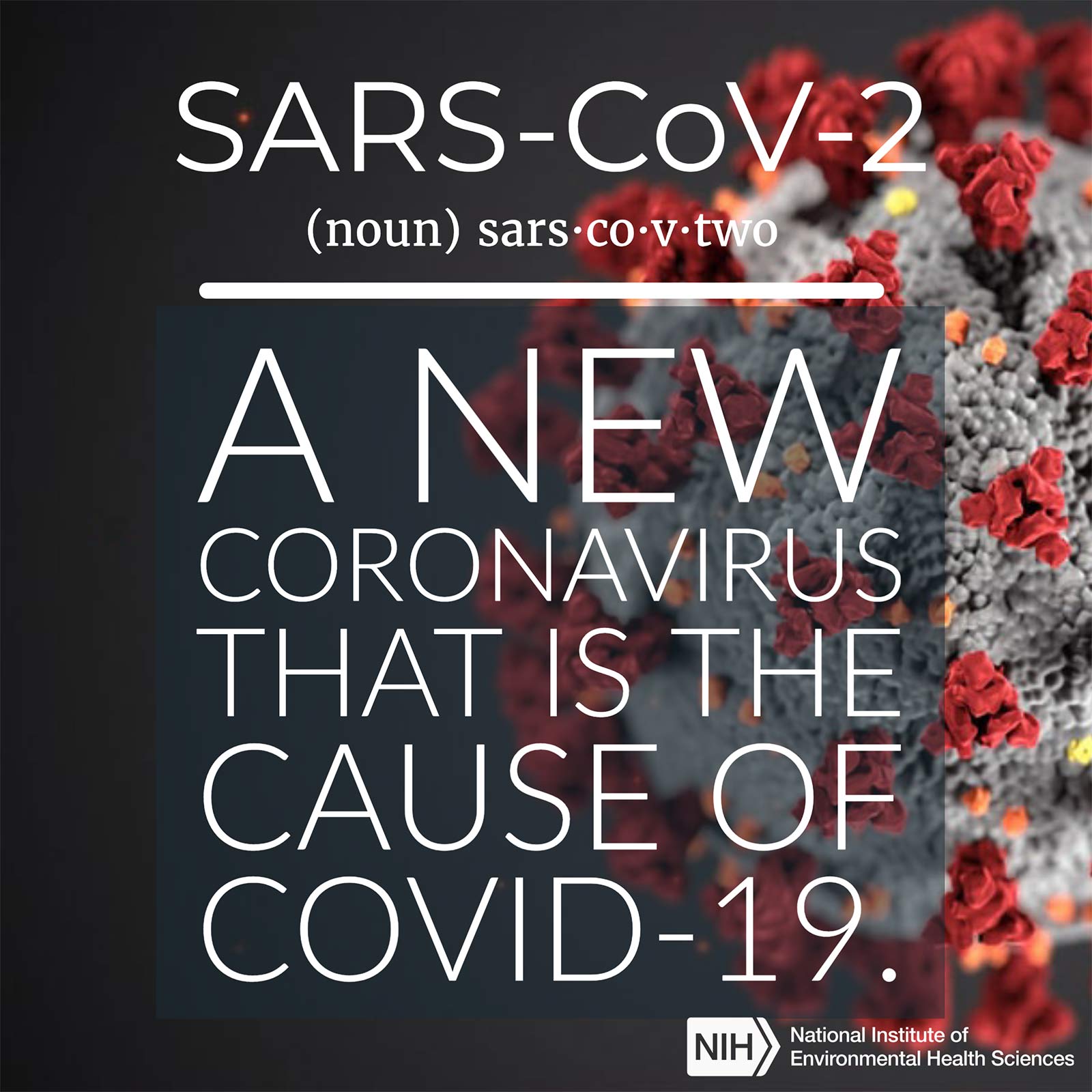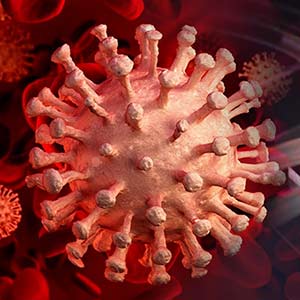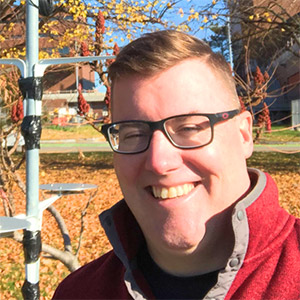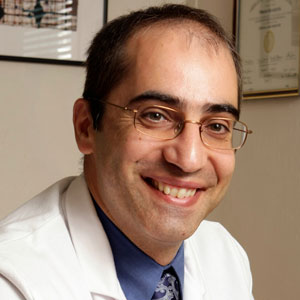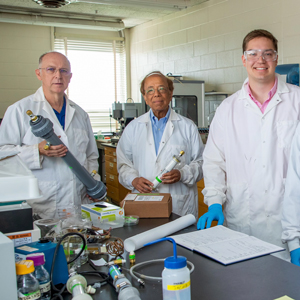Accurate, fast, easy-to-use, and widely accessible testing is required before the nation can safely return to normal life, according to the National Institutes of Health (NIH). New NIH funding supports expanded availability and development of technologies to test both sick and healthy people for SARS-CoV-2 and stop the spread of COVID-19.
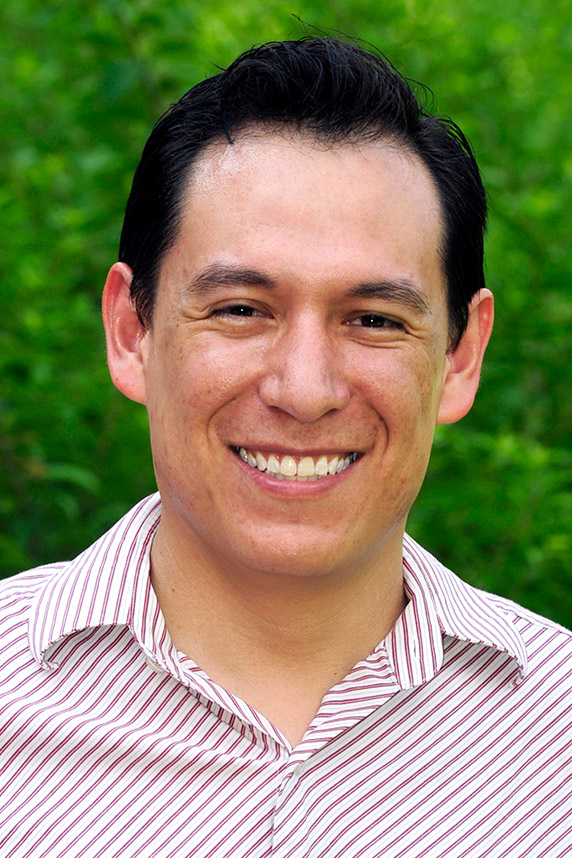 Once Lozoya validates his method and determines it is precise, sensitive, and reproducible, the technology will be made available to agencies, hospitals, and others. (Photo courtesy of Steve McCaw)
Once Lozoya validates his method and determines it is precise, sensitive, and reproducible, the technology will be made available to agencies, hospitals, and others. (Photo courtesy of Steve McCaw)NIEHS research fellow Oswaldo (Ozzy) Lozoya, Ph.D., and lead researcher Douglas Bell, Ph.D., received $1 million from the Rapid Acceleration of Diagnostics (RADx) program. Their project falls under the RADx-Radical arm (RADx-rad), which funds new, nontraditional approaches. Lozoya is perfecting a method to combine thousands of biological samples and test them for SARS-CoV-2 infection in a single run. The approach would help overcome time constraints inherent in the chemistry of identifying virus particles, he explained.
This is the only in-house research proposal at NIH to receive RADx funding. A separate NIH initiative, the Intramural Targeted Anti-COVID-19 Program (ITAC; see sidebar), focused on projects by in-house scientists.
Rapid program deployment
NIH Director Francis Collins, M.D., Ph.D.; NIEHS Director Rick Woychik, Ph.D.; and other NIH leaders described the need for and objectives of RADx, in a July 23 special report published by the New England Journal of Medicine.
Congress appropriated funds for SARS-CoV-2 testing in the Paycheck Protection Program and Health Care Enhancement Act. “Within 5 days after the legislation was signed into law, the NIH launched RADx to support the development, production scale-up, and deployment of accurate, rapid tests across the country,” wrote Collins and his co-authors.
RADx also supports “strategies for making testing available to diverse, vulnerable, and underserved populations through 2021,” they explained.
Low cost, available, versatile
Lozoya's innovation adapts existing tools to a new purpose and would lower the cost of SARS-CoV-2 testing. He also wants the process to work on easy-to-obtain samples, such as the cheek swabs many people are familiar with from DNA ancestry testing. Quick and easy sampling will help testing facilities scale up to levels needed to fight the pandemic.
The new technology promises to be versatile as well. “By looking at the active genes, you might be able to tell who is sickest, or who is about to get sick,” Lozoya explained. It might also be possible to detect past infection. These personalized medicine applications will be adaptable to viruses in future pandemics.
“Involvement of our in-house scientists in COVID-19 research is a wonderful example of how stable, long-term funding of researchers and emphasis on high risk-high reward research allow scientists to quickly shift focus and respond to a public health emergency,” said NIEHS Scientific Director Darryl Zeldin, M.D. High risk-high reward research refers to innovative projects that have a risk of not succeeding, but the rewards are great when they do.
Excellent training meets the need
 “I’m very fortunate to be Ozzy’s supervisor, because this is his idea and he’s the one who is going to make it work,” Bell said. (Photo courtesy of Steve McCaw)
“I’m very fortunate to be Ozzy’s supervisor, because this is his idea and he’s the one who is going to make it work,” Bell said. (Photo courtesy of Steve McCaw)“If we get this in place and the whole throughput goes up thousands-fold, it will be a revolutionary type of change,” said Bell. But Lozoya does not see himself as a revolutionary scientist. “I think it’s just a convergence of moments,” he said. “It’s a question of duty—if you have the tools and the skills, and you have the opportunity to make a difference, you go for it.”
He credited NIEHS research training and core facilities with building the foundation for his project. “All the training I’ve been doing throughout my fellowship equipped me so that in this moment, I knew what to do, or at least knew who to reach out to,” said Lozoya.
Brian Papas, from the NIEHS Integrative Bioinformatics Support Group, is developing programs to mine the vast amounts of data generated by the assay. “And kudos to the Epigenomics and DNA Sequencing Core Facility,” Lozoya added. “They have all the equipment we need.”
Intellectual property is yet another feature of the project that will come into play as Bell and Lozoya seek commercial partners to scale up.
Citation: Tromberg BJ, Schwetz TA, Perez-Stable EJ, Hodes RJ, Woychik RP, Bright RA, Fleurence RL, Collins FS. 2020. Rapid scaling up of COVID-19 diagnostic testing in the United States — the NIH RADx initiative. NEJM; doi: 10.1056/NEJMsr2022263 [Online 22 July 2020].





